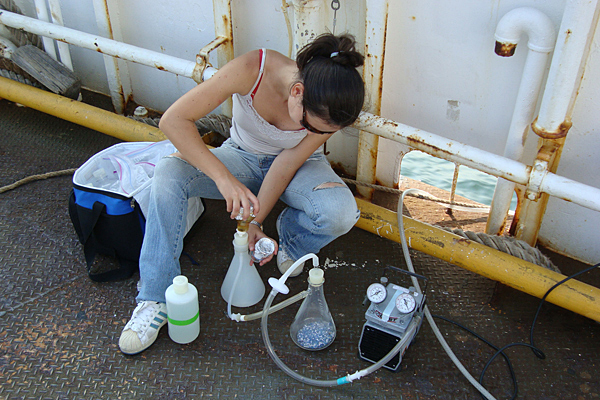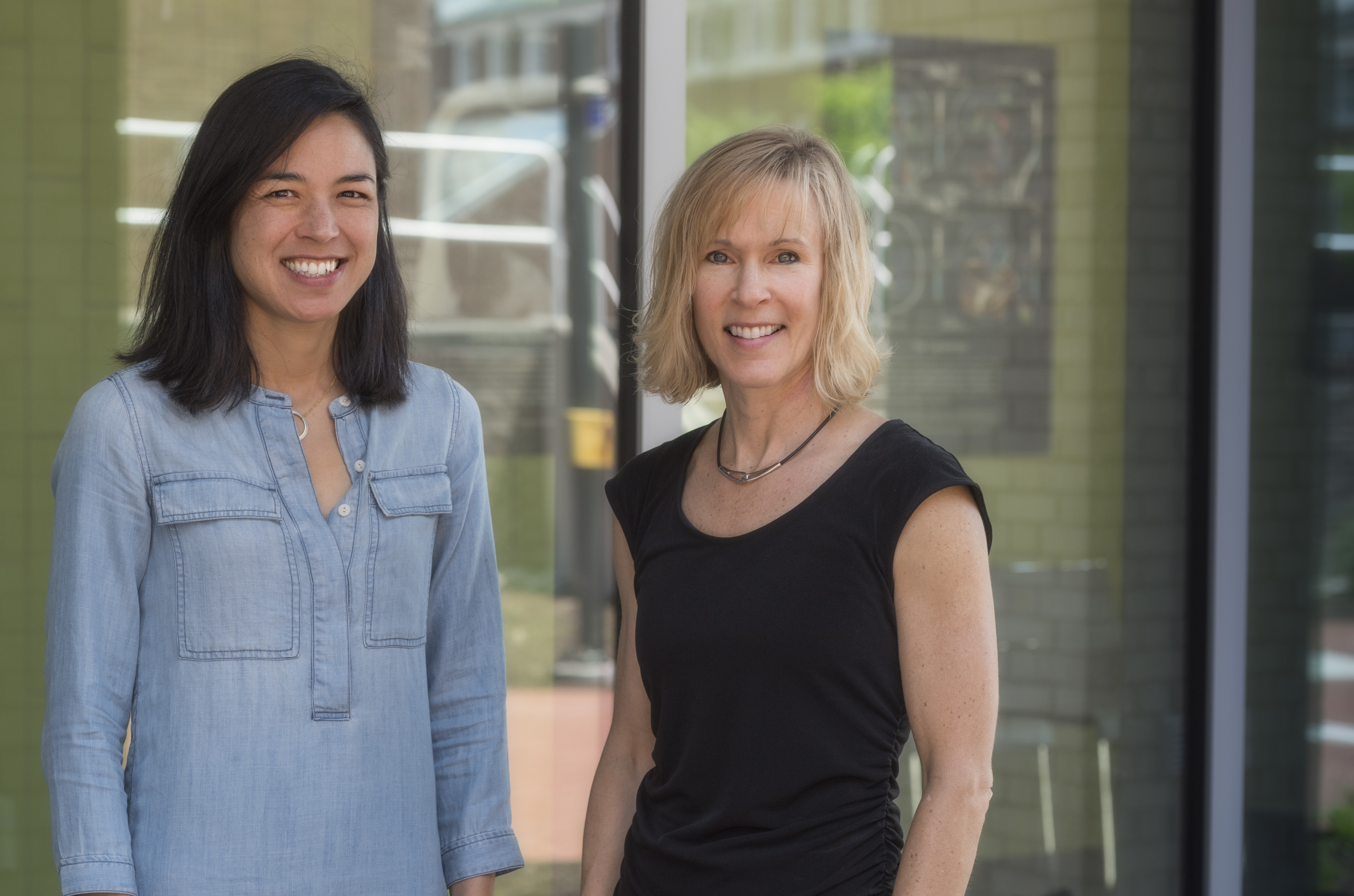


Ferry as research vessel
Monitoring system on MV Twin Capes measures Delaware Bay water quality data
8:26 a.m., Sept. 9, 2011--During the summer, the University of Delaware College of Earth, Ocean, and Environment (CEOE), with the cooperation and assistance of Delaware River and Bay Authority (DRBA), launched a unique research project using a complex, automated measurement and sampling system on the MV Twin Capes.
The SeaKeeper 1000, manufactured and installed aboard the ferry vessel by YSI, Inc. of Yellow Springs, Ohio, collects water quality data while the vessel transits the Delaware Bay.
Research Stories
Chronic wounds
Prof. Heck's legacy
“Although historically it did not suffer the extreme pollution of the urban Delaware River, the Delaware Bay does suffer from more subtle ‘pollution,’ habitat destruction and overfishing,” said Jonathan Sharp, oceanography professor in CEOE who has been studying the estuary of the Delaware River and Bay for more than three decades and is assisted in this project by doctoral student Yoana Voynova. “A research understanding is necessary to eventually provide a routine monitoring capability to assist in managing the valuable resources of the Delaware Estuary.”
Despite hundreds of research cruises from Sharp’s group and continual monitoring of the full length of the estuary for over 40 years, the sampling density is not sufficient to describe and quantify the water exchange across the mouth of the bay. The current research effort is beginning to change this reality.
With up to eight crossings a day by the ferry vessel, there is ample opportunity to provide real-time readings and to scoop up water samples for the researchers. More detailed data and information has been gathered this summer on the exchange across the mouth of the bay than all of the previous monitoring and sampling of close to a half-century.
The SeaKeeper 1000 is an automated ocean and weather monitoring system. Its modular platform is mounted with the following enclosed components: computer controller, pump and water quality sensors, and meteorological station. Small, through-hull gate valves pump seawater into the instrument where the sensors measure it and log the data. The data can also be accessed remotely and a subset is also telemetered to NOAA's Volunteer Observing Ship Program. With future funding the data will be viewable onboard the ferry system through an interactive kiosk.
“We are very excited to have partnered with the University of Delaware and DRBA to initiate what we hope will be a long-term ferry monitoring program at the mouth of the Delaware Estuary,” remarked Chris Heyer, YSI technical sales, mid-Atlantic region. “The data generated by this program will give scientists and managers a better understanding of the complexities of the estuary, and it is our hope that the data will ultimately help guide future management and restoration actions to improve the Delaware Estuary."
“For more than 40 years, our passengers have enjoyed the unparalleled scenic beauty of the Delaware Bay while traveling aboard the Cape May – Lewes Ferry,” said Michael Porch, marketing manager for the CMLF. “We’re proud to support an effort that will help secure this beauty for future generations.”
As the ferry crosses the mouth of the bay, water is pumped from the bay into the system in the bow of the vessel where continuous measurements are made of the temperature and salt content of the water (to track exchange in and out of the bay), the dissolved oxygen (giving balance between photosynthesis from microscopic plants and oxygen demand from animals and bacteria) and chlorophyll content (an estimate of the amount of microscopic plant material that is in the water).
The data gathered not only allow tracking of the water from within the Delaware Bay and offshore, but also provide researchers with an indication of the health and vitality at the mouth of the Delaware Estuary.
The research project, funded by the National Oceanic and Atmospheric Administration through the Delaware Sea Grant program, will likely continue for another two years. After this project, the measurements should be continued as part of routine monitoring.
The Delaware River Basin Commission (DRBC), a four-state federal cooperative agency that has regulatory authority working closely with the states of Delaware, New Jersey, Pennsylvania, and New York, has conducted monitoring of the length of the estuary for over 40 years. If all goes as expected, DBRC may supervise the continued monitoring, working with DRBA and UD.










